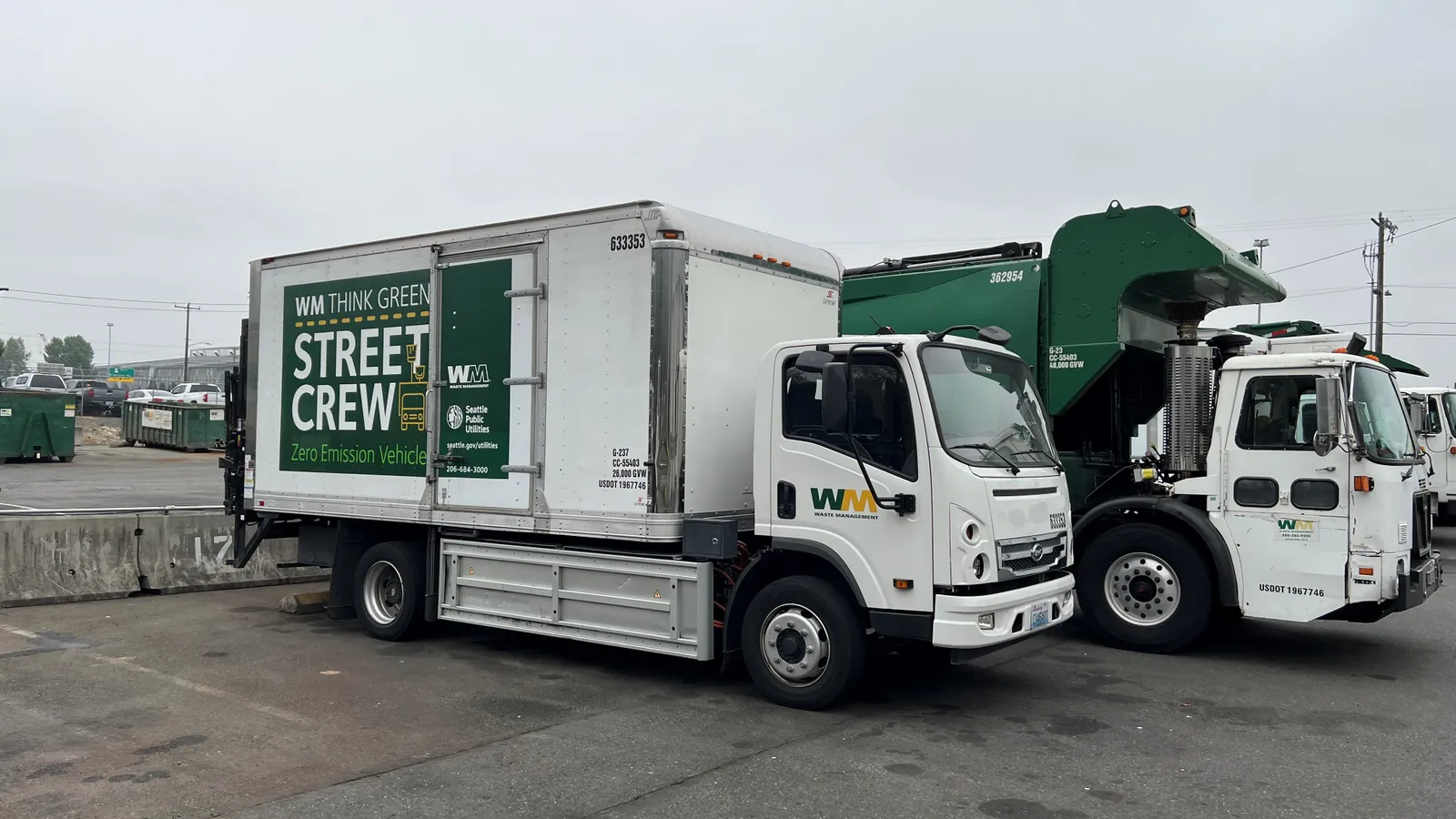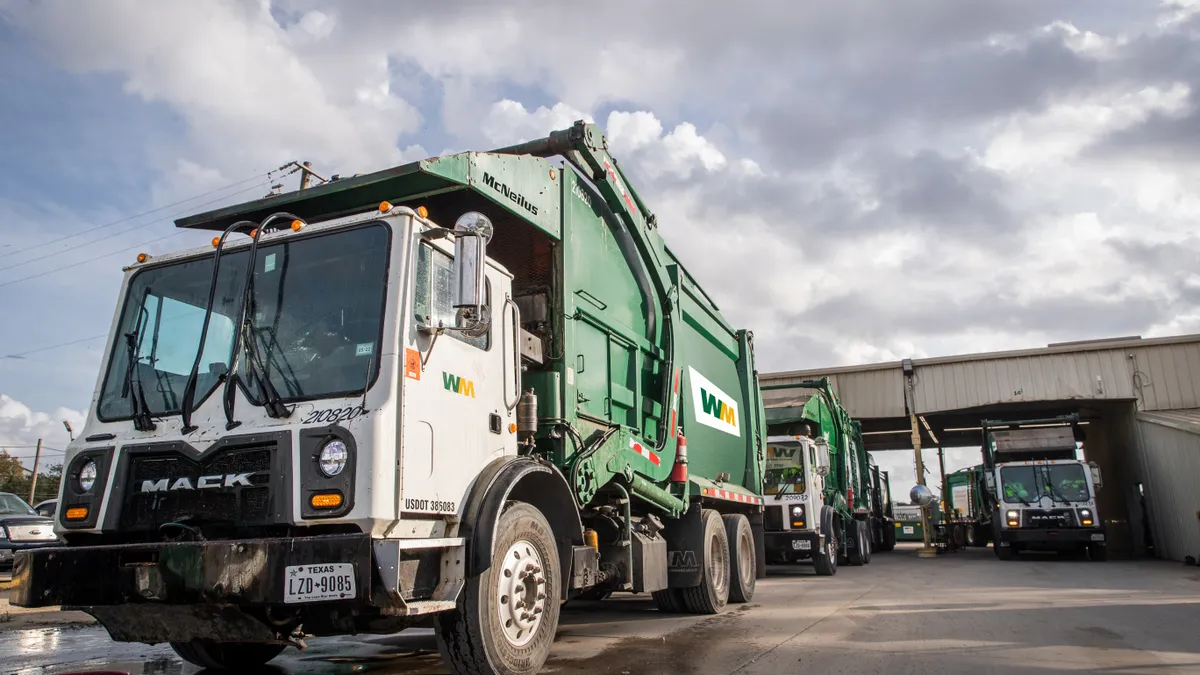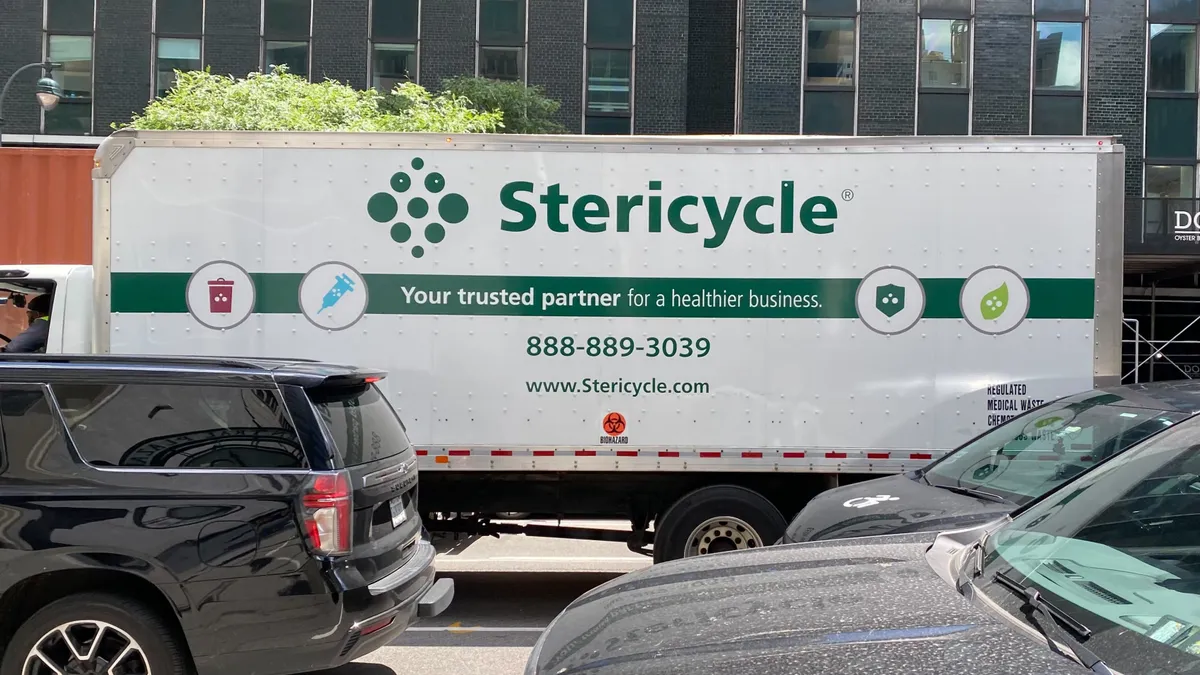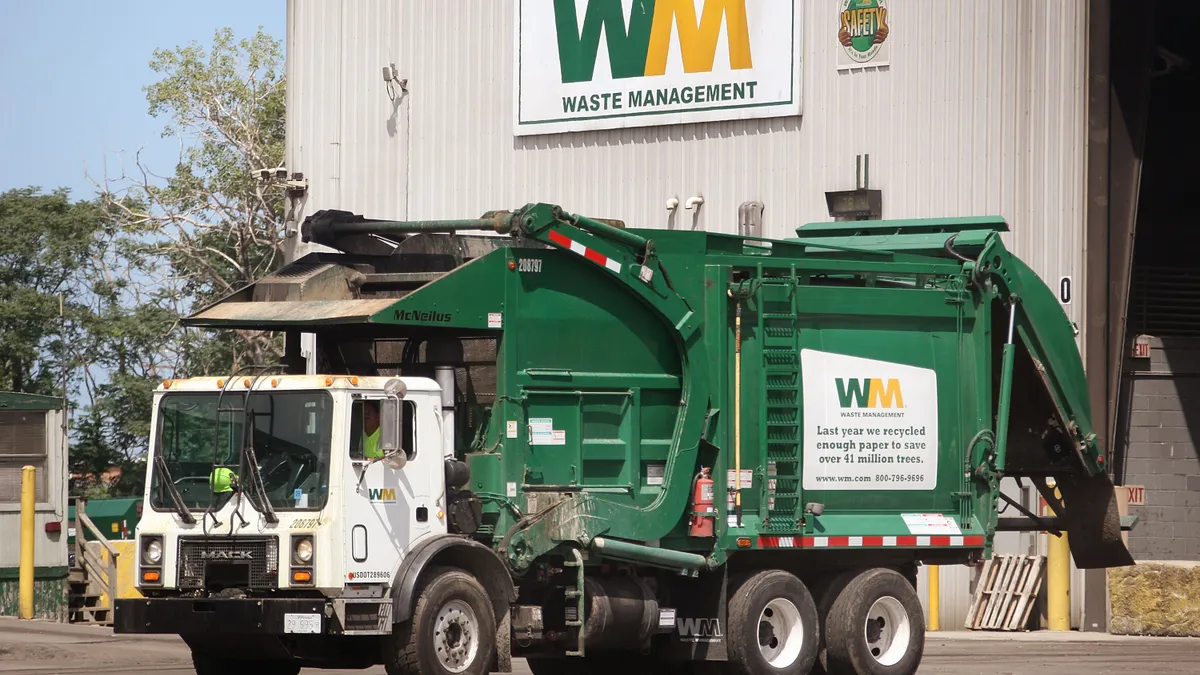WM’s push for a sustainable fleet began decades ago in California with liquefied natural gas. Despite early hesitation about a pivot away from diesel, over 70% of the company’s trucks now run on compressed natural gas or renewable natural gas. Over half of the fuel allocated to the natural gas fleet is renewable, produced from biogas created at landfills and anaerobic digesters. And today, the company is considering where and when to incorporate electric vehicles.
Waste Dive recently caught up with Chief Operating Officer John Morris and Senior Director of Fleet David Tessin to discuss the company’s outlook on how to fuel its growing fleet in the future, especially its recognizable green and gold heavy-duty collection trucks.
WM recently noted it’s upping planned investment for its renewable energy business, now projecting more than $1.2 billion between 2022 and 2025. It expects to have the capacity to power its entire CNG fleet with RNG by 2026 and is assessing how the Inflation Reduction Act and proposed updates to the U.S. EPA Renewable Fuel Standard program could increase opportunity with landfill gas-to-energy projects.
While WM has worked to build out that capacity, zero-emission vehicles have gained prominence in certain states and nationally as the next solution to slash the environmental impact of passenger and heavy-duty vehicles alike.
Much of the waste and recycling industry is awaiting longer range capability, further data on battery electric vehicle performance in varied climates and more competitive prices. So too is WM testing EVs in its fleet. Recent industry EV developments such as Oshkosh’s single-platform model, which WM said it was involved with since the early stages and was also celebrated by Republic Services, are moving the conversation forward. Hybrid vehicles might also make sense as “a bridge to get to pure electrification” and as emerging technologies continue to develop and improve, Tessin said.
As for when a wider-scale battery electric vehicle rollout might occur: “Hard to say on the heavy-duty side,” Morris said. Even if the battery technology were ready, there would be infrastructure questions on how to electrify dozens or over 100 trucks at one location. “That's probably the one answer we don't have a lot of clarity on yet.”
This interview has been edited for length and clarity.
WASTE DIVE: What are some of the factors influencing how you move forward in managing and planning for a functional and sustainable fleet that might have evolved from even a few years ago?
DAVID TESSIN: Obviously electrification is what people talk about now, starting with the hybrid vehicles of over a decade ago and now migrating into pure battery electric with passenger vehicles. That is certainly a hot topic of focus here at WM. We've been exploring electrification across our entire asset suite for a handful of years now — both Class 8 and less than Class 8.
Right now, it's understanding the benefits and the challenges of that technology, and just as we did with CNG, [we’re working through] those challenges in such a way [to make it work] operationally. Electrification is very young. I think there are a lot of obstacles to overcome. But just as we were committed to making CNG work in this industry, we see electrification working in the same way. [If it] offers the best environmental solution and is the best solution for our customers, we will make it work.
JOHN MORRIS: We've proven we have the track record to be able to pivot from what we were doing with diesel and biodiesel to CNG, and we feel confident that as other technologies become available for our space that we'll be able to do that.
I think if you look back a handful of years and look at what's happened with electrification and the technology, I think it's going to happen for at least medium-duty vehicles and hopefully at some point heavy-duty vehicles.
The battery technology being there and being integrated into the vehicle [to service] our customers is one thing. The other question that's really an interesting one – and we're following it closely in [Washington] D.C. and also honestly on the West Coast – is the infrastructure question.
If we were to pivot to electrification, we want to have the confidence that the infrastructure to be able to do that day in and day out — with a fleet of [more than 15,000] routed vehicles – is going to be there. And that's an interesting topic. We're following that closely with our partners, and also with our government affairs group, both at the state and federal level.
Infrastructure is years in the making. Can you share more about how WM is thinking about and preparing for electric, even if the truck technology that you want to see might not be here now?
TESSIN: We've been piloting a variety of the asset classes, and those have very different energy demands … The battery on a Class 8, the technology isn’t quite there, but it is there for a less-than-Class 8. And the demand for fueling is very different.
What we're doing is we're effectively overlaying the capability of current electrification across how we operate our fleet today. There's some natural fits, and those are the places that we really want to target first – it fits within our operating model, it doesn't disrupt it, it fits within the technology ... I think one of the bigger concerns is: We offer an essential service. And a brownout doesn't work for a cleanup effort, or supporting our customers in the way they expect to be served.
Just as we talked about before, there were obstacles and there were hurdles with CNG. WM really was the pioneer with that. The technology that is operating today exists because of the partnerships that WM has made with manufacturers sharing information to make those products better.
MORRIS: And we’re doing that today. We're obviously working with our partners, in concert with them, looking at how that technology is being developed ... What we don't want to do is have fits and starts where we make a commitment to start pivoting to the technology and then find out that it's not fully deployable within our operations.

You aren't the only ones who are hoping to see higher-functioning electric vehicles. Do you have a sense of what will give you the confidence in the future to deploy EVs at a wider scale?
MORRIS: We've actually already started putting some [light and medium-duty] electric vehicles into our fleet. So we're testing the performance there. And we've got … pilots with electric refuse collection vehicles that are out there running now. And like any kind of new technology, any pilot process, we've got a range of results there – some are more promising than others. But I think what you see is that, over time, the technology is progressing and we're moving closer to a solution that suits our industry.
TESSIN: So the conditions – certainly flat and temperate, versus extremely hot, extremely cold, extremely mountainous – those are all environments that we're going to have to continue to understand how that affects the energy consumption of that vehicle. Layering that in where it fits, because there are places that they do fit, but then work on the advances that allow it to cascade across much more of our fleet.
MORRIS: When you look at how we pivoted from diesel to CNG, we had the same challenges. It was new technology. The range of the trucks wasn't then what it is now. There was slow-fill, fast-fill. There were infrastructure questions.
This won't happen in one fell swoop overnight. As technology advances, we've got plenty of data to suggest where and when we'll be able to start ... So the team's got all the foundational work done, and I think as the technology advances it won't be terribly complicated for us to figure out where and how to deploy it.
WM has noted that as regulatory actions might favor adoption of zero-emission vehicles, that could shift some tax incentives or grants away from natural gas. How could that affect your planning going forward and investments in different areas?
TESSIN: It's being written now; nothing is quite finalized yet. Our customers are looking towards a more sustainable, cleaner solution, and from a fleet side we're trying to find the best solution for that.
So if our customers are looking for electric, we're going to offer the best electric solution to provide that to them, whether it's eRINs – which we think are going to be some factor; as you move from the incentives that were there to support CNG, there's going to be incentives there that support electrification. We're just assuming at this point, since it's not not written yet, that those are going to be there for support.
MORRIS: We've got an exceptional balance sheet which affords us the luxury that, as some of these regulations change, and if a particular state or province were going to go zero-emission vehicles, and assuming all those other questions about technology infrastructure were answered — we would have no problem doing that because we have the strength of our balance sheet, we've got the strength of our fleet operations team, our supply chain team, to be able to pivot and make the move into one of those venues with a fully electric fleet.
At this point, would it be correct to think that in the future WM might have a patchwork of technologies deployed based on what makes sense for certain regions and customers? Or would it be more optimal to consolidate around whichever technology proves best for collection?
MORRIS: I think the important word that you used in that question was “customer.” And first and foremost we want to respond to our customers’ expectations. So if our customer is demanding a technology within our fleet that they want us to use, then that’s certainly a bar that we need to understand how to get over.
And “patchwork” – I don't know if that would be the right way to think about it. I do think with any shift from current to future technology – whether it's fleet, whether it's what we're doing in recycling, whether it's what we're doing with automation and optimization in other parts of the business – it's going to be a phased-in approach ... even if we had the perfect solution tomorrow, it would take some time to phase it in to make sure that we were confident we were not going to disrupt the business and disrupt the service to our customers.
TESSIN: As the fleet guys, we want standardization. We want the same fleet across our enterprise. It just makes things so much easier to manage. But in electrification, we've already seen some folks come and go, right, and we certainly want to bet on the right horse. But it's going to be more varied in the early days, and exploring and piloting many different solutions such that we find the best solution that does work for our customers ... I think it will narrow itself very quickly as we see who those right solutions are in the long run.


















